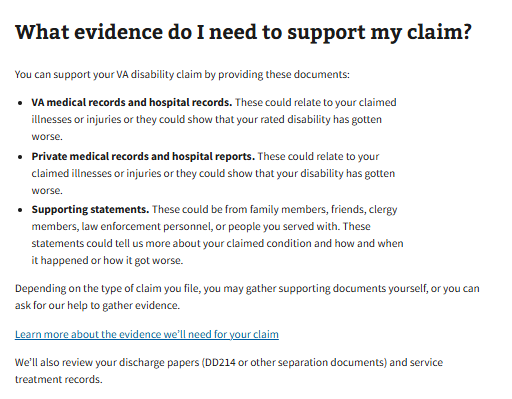
100% VA Disability in 2025: If you’re a U.S. military veteran with a 100% disability rating and a dependent child, 2025 brings meaningful updates to your benefits. You’ve served, sacrificed, and now it’s your turn to be taken care of—with compensation that reflects your commitment and supports your family. This guide walks you through everything you need to know about VA disability compensation rates in 2025, especially for veterans with one child. Whether you’re new to navigating the system or have been receiving benefits for years, this article breaks it all down in a clear, approachable way—combining official information, practical examples, and expert advice.
100% VA Disability in 2025
In 2025, a veteran with a 100% disability rating and one child is entitled to $3,974.15 per month, tax-free. That’s not just a number—it’s a recognition of your service, your sacrifice, and your right to a life of dignity and support. But many veterans don’t know they can earn more—for additional children, for a spouse who needs care, or when a child continues school. This is your hard-earned benefit, and you deserve every dollar. So don’t stop at the basics. Get help. Stay informed. And always advocate for what you’ve earned.
| Benefit Details | Amount (USD) | Notes |
|---|---|---|
| Monthly Compensation | $3,974.15 | For a veteran rated 100% with one child. |
| Each Additional Child Under 18 | +$106.14 | Per child under age 18. |
| Each Additional Child Over 18 (Student) | +$342.85 | Must be enrolled in school full-time. |
| Spouse Receiving Aid and Attendance | +$195.92 | If spouse requires help with daily activities. |
| Effective Date | December 1, 2024 | Reflects 2025 rates with a 2.5% COLA adjustment. |
| Official Source | VA.gov | U.S. Department of Veterans Affairs. |
What Is VA Disability Compensation?
VA disability compensation is a tax-free monthly payment made to veterans who were injured, fell ill, or developed chronic health conditions during—or because of—their military service. It also applies if a pre-existing condition worsened during your time in uniform.
The U.S. Department of Veterans Affairs (VA) uses a rating scale from 0% to 100% (in 10% increments) to determine the severity of a veteran’s condition and how much compensation they receive.
A 100% rating means your disability is considered total, and it qualifies you for the maximum monthly compensation, which increases based on your number of dependents.
Understanding the 2025 VA Disability Compensation Rates
As of 2025, a veteran with a 100% disability rating and one child will receive a base payment of:
$3,974.15 per month — and this amount is tax-free.
This reflects the Cost of Living Adjustment (COLA) of 2.5% that took effect on December 1, 2024, which is factored into the 2025 rates.
These adjustments help ensure that your benefits keep pace with inflation. Every year, the VA aligns its compensation rates with the Social Security COLA to protect your purchasing power.
How Additional Benefits Work with Dependents?
Once you’re rated 30% or higher, your monthly compensation can increase if you have dependents such as:
- A spouse
- Children under 18
- Children over 18 in school
- Dependent parents
Here’s how these add-ons work in 2025:
Additional Child Benefits
- Each additional child under 18: +$106.14
- Each additional child over 18 in a qualifying school program: +$342.85
Aid and Attendance for Spouse
If your spouse needs regular help with daily tasks (like bathing, dressing, or feeding), you can qualify for an Aid and Attendance allowance of $195.92 per month.

How to Calculate Your Total Compensation?
Let’s walk through a real example of how this adds up.
Scenario:
You’re a veteran rated at 100%, with a spouse who needs assistance, and two children under 18.
Here’s your monthly breakdown:
- Base rate (100% with 1 child): $3,974.15
- One additional child under 18: +$106.14
- Spouse Aid & Attendance: +$195.92
Total: $3,974.15 + $106.14 + $195.92 = $4,276.21 per month
All of this is non-taxable income.
How the VA Determines Your Disability Rating?
The VA uses the Schedule for Rating Disabilities to assign a percentage to each condition you claim. These ratings are based on how much the condition affects your daily life and ability to work.
If you have multiple conditions, they aren’t simply added together. The VA uses a combined rating table, which is a bit complex.
Quick Example:
- If you have a 70% rating for PTSD and 20% for a knee injury, your combined rating is not 90%—it’s just over 75%, which rounds to 80%.
How to Check Your Current VA Rating?
Here’s a step-by-step way to check your rating:
- Go to VA.gov
- Sign in using Login.gov, ID.me, or My HealtheVet.
- Select “Disability” from your profile.
- Click “View your disability rating”
From there, you’ll see your rating percentage and the list of service-connected conditions.
How to Apply or Update Your 100% VA Disability in 2025?
If you haven’t applied yet or think your current rating is too low, you can file a claim or request an increase.
Ways to File:
- Online: VA Disability Claim Portal
- Mail: Send completed forms to the VA regional office.
- In Person: Visit your local VA office or work with a Veteran Service Organization (VSO) like DAV or VFW.
Tips for Getting the Most from Your Benefits
- Keep dependents updated
Notify the VA when you have a child, your child starts or finishes school, or you get divorced. - Use a VSO to File Claims
VSOs are free and trained to help you navigate complex paperwork. - Apply for Special Monthly Compensation (SMC)
If you have loss of limbs, are housebound, or need personal care, you may qualify for more benefits. - Track your COLA each year
The Social Security COLA page gives insight into upcoming changes to your rates.
Veterans Alert: 2025 Pension Settlement Is Live—Claim Form & Amount Inside!
Veterans With 70% Disability and 2 Parents: Here’s Exactly How Much You’ll Get Monthly
Chapter 31 VA Benefits: Can You Still Qualify With a Less-Than-Honorable Discharge?
A Veteran’s Story: Real Life Experience
John, a Marine Corps veteran rated 100%, said:
“I didn’t even realize my daughter’s college enrollment meant more money until a VA rep explained it. Just sending in the school form added $342 to my monthly check. That helped cover her rent. Don’t leave money on the table—ask questions.”
Veterans often miss out simply because they’re not told what they’re entitled to. Make sure you’re not one of them.











